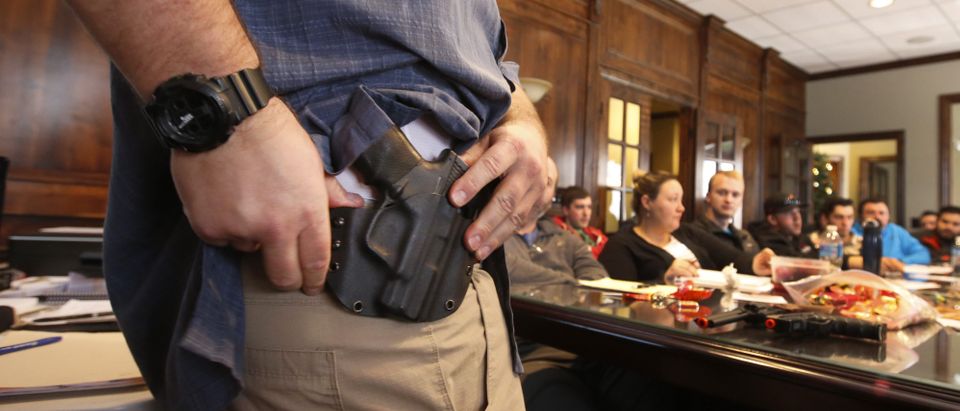By Sam Hoober, Alien Gear Holsters
Ah, New Year’s Resolutions. Most people keep them up for about five minutes, which is why there’s so much more space in the gym come February. Some people embark on a journey of self-improvement and succeed, thereby becoming a good example to others, and that’s just disgusting.
For those few who manage to lose weight, you might notice that concealment gets a little more interesting. In fact, some people find that it becomes more problematic as they get smaller, though some may notice the opposite effect.
What is a person to do in this case?
Bear in mind that your mileage may vary. A lot of concealment comes down to how your gun and your clothes sit on you. You’ll have to work out what works for yourself.
The first trick is to adjust your carry position. Everyone has a “sweet spot” on their waistline, a spot where the concealed carry holster and pistol virtually disappear, or at least there’s so little printing that the casual observer isn’t going to notice. When you start losing inches, your shape changes and so does the sweet spot. All you may need to do is bring the gun further forward or further to the rear.
Next is to make sure that you size down to an appropriate size gun belt. The reason that you’re supposed to get a stiffer-than-normal belt is to keep the gun and holster secured to the waist. It’s supposed to hold the gun in place horizontally and vertically. If you drop a size or two, you’ll want to get a belt that’s correctly sized so it can do its job.
If your weight loss regimen hasn’t included weight training (you’d be surprised how much of it is diet) you might also want to start, and make sure to concentrate on the shoulders. You don’t need to become Dorian Yates, but see if you pack a little more on the deltoids.
Why is that, exactly? It’s easier to conceal a pistol if your shoulders are wider than your waist. The shirt drapes over a holster much more easily. Again, you don’t need to become Mr. Universe, unless you want to, but adding a little will help.
Another thing to look at is your manner of dress. Some people find they have to wear the next size up of pants to conceal well, which is fairly easy. Consider buying shirts in tall sizes for a little extra draping, though this will only work well for people a touch on the tall side. If you must get a slim cut, get the next size up in shirt.
Some find tucking the shirt over the holster can get problematic after they drop a shirt size or two. In this case, try the next size up in dress shirt rather than a casual shirt, and I mean dress shirts. For those unaware, dress shirts are offered by a numerical size rather than the usual Small, Medium and so on. The number is the circumference of the neck. If you wear a 15, try a 15 ½ or a 16. The extra material will likely help you conceal a bit better. However, since the increment is smaller, you also don’t look like you’re wearing a tent by going one size up.
You may also try switching from IWB to appendix carry or, if previously used to appendix carry, to IWB carry. You may find that one or the other works better with the weight loss. A smaller gun may also be called for, as a Shield is going to be more easily covered up for most people than, say, a P226.
So, have you discovered you have to change your concealment after weight loss? What did you do that worked?
Click here to get your 1911 Pistol Shopping Guide.
Click here to get The Complete Concealed Carry Training Guide
Sam Hoober is Contributing Editor for AlienGearHolsters.com, a subsidiary of Hayden, ID, based Tedder Industries, where he writes about gun accessories, gun safety, open and concealed carry tips. Click here to visit aliengearholsters.com.


